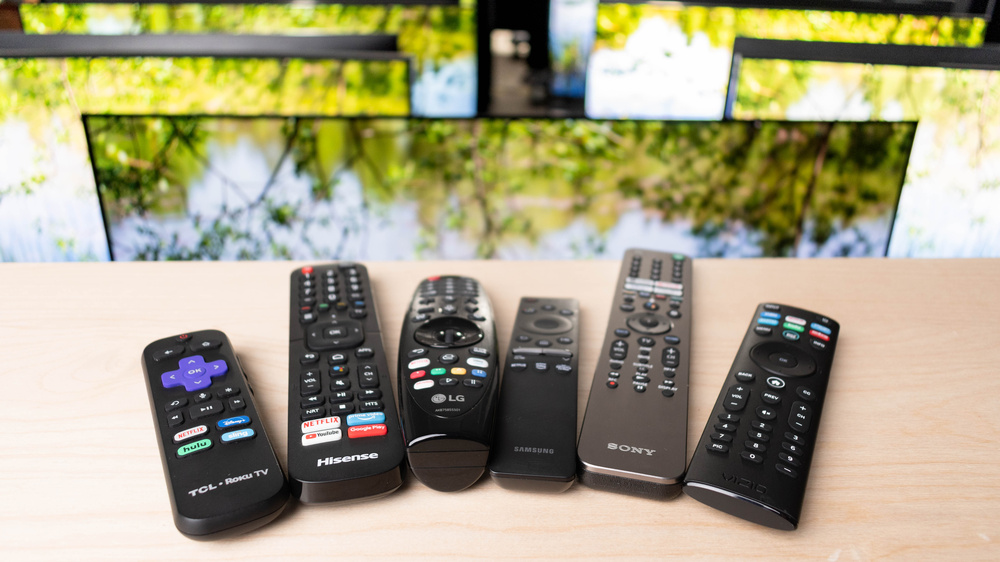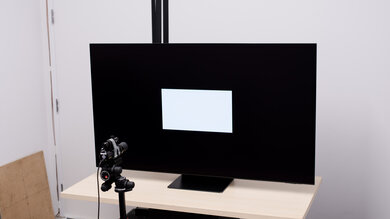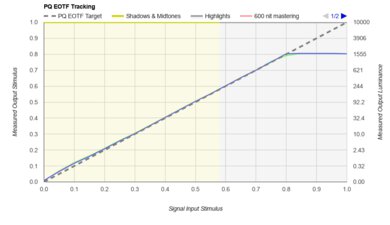
Shopping for a new TV can be challenging; with so many different manufacturers, it can be hard to know which is the best TV brand and where to start. Some TV brand names are well-known, but popularity doesn't equate to being the best, as even the best brands' entry-level models don't perform well. Some budget-friendly TV brands are starting to make waves in the market and often release models that are better than more expensive options. We've bought and tested more than 440 TVs, and you can see a full list of each brand's 2024 TV lineups here.
From smart features to design, each brand has its own way of doing things. So, how do they stack up? Keep reading to see our take on the best TV brands in the U.S. Also, see our recommendations for the best smart TVs, the best TVs for movies, and the best 4k TVs, or vote on which TVs you want us to buy and test.
-
Best Sony TV
Mixed Usage9.2TV Shows8.9Sports9.1Video Games9.3HDR Movies9.3HDR Gaming9.1PC Monitor9.4The best Sony TV on the market is the Sony A95L OLED. It's very similar to the Samsung S95C OLED, as it features the same impressive QD-OLED panel that delivers incredibly deep, inky blacks and bright, vibrant colors that stand out well. It features the amazing processing capabilities that Sony is known for, so it's a great choice for movie lovers looking for the absolute best TV for a basement home theater setup. It's also a great TV for gaming, with a nearly instantaneous response time and very low input lag that results in a very responsive experience, although its input lag is higher than competing models from other manufacturers.
As amazing as this TV is, it's expensive and only worth it for home theater enthusiasts wanting the best movie-watching experience. If you want a Sony OLED for Sony's processing capabilities but don't necessarily want to pay for the premium price tag of this model, look up the dimmer but cheaper Sony A80L/A80CL OLED. The A80L uses a WOLED panel, so it isn't nearly as colorful as this TV. However, it still has Sony's legendary processing capabilities. If you're more concerned about bright room performance, Sony also makes some impressive LED models, like the Sony BRAVIA 9 QLED, which is amazing for bright rooms and is the best overall LED TV on the market.
You can also check out the best Sony TVs here.
-
Best Samsung TV
Mixed Usage9.0TV Shows8.6Sports8.9Video Games9.4HDR Movies8.9HDR Gaming9.2PC Monitor9.5The best Samsung TV we've tested is the Samsung S95D OLED. It's an outstanding TV that delivers impressive overall picture quality. The TV uses a QD-OLED panel, and like traditional WOLED panels, the TV delivers the same inky blacks in a dark room with no blooming or haloing when bright objects are on screen. However, you also get a brighter overall TV that displays more vibrant and lifelike colors than a traditional WOLED, so highlights and colors really stand out in HDR content. Due to the TV's incredibly wide viewing angle, the image doesn't degrade when viewed from the sides, so it's well-suited for watching movies, shows, or sports with friends.
Unlike high-end TVs from other brands, the S95D doesn't support the Dolby Vision format that many streaming services and 4k Blu-rays use as their primary HDR format. Instead, it supports the similar HDR10+, but since it's much less common, you'll have to stick to normal HDR10 for most content. It also doesn't support DTS audio formats that are common on physical media. When it comes to gaming, the TV is remarkable. It has HDMI 2.1 bandwidth on all four ports, supports VRR, and supports up to 4k @ 144Hz, which makes it a fantastic choice to pair with modern consoles or high-end gaming PCs. You get a very responsive gaming experience due to its incredibly low input lag, and fast motion has no noticeable blur due to its nearly instantaneous response time.
What most distinguishes this TV from its competitors is its use of a matte screen coating. The matte coating does an amazing job of eliminating reflections in a bright room, but it does so at the cost of contrast. Blacks look grayish in a bright room, and you lose the impact an OLED typically has. If you want a very similar TV with a gloss finish, check out last year's Samsung S95C OLED.
See the best Samsung TVs here.
-
Best LG TV
Mixed Usage9.2TV Shows8.9Sports9.0Video Games9.5HDR Movies9.2HDR Gaming9.2PC Monitor9.6The best LG TV we've tested is the LG G4 OLED. It uses Micro Lens Array (MLA) technology that allows the TV to get brighter than traditional WOLED TVs. This extra brightness delivers highlights that really pop when watching HDR content, and the TV easily overcomes glare in a bright room when watching SDR content. The TV truly shines in dark rooms due to its near-infinite contrast ratio, so you get deep and inky blacks with no blooming around subtitles or bright highlights. Its wide color gamut and impressive color volume deliver vibrant, lifelike, and bright colors, so HDR content packs a punch. It's a fantastic TV for watching shows, sports, or movies with friends or family due to its incredibly wide viewing angle, as the image doesn't degrade when viewed from the sides of the screen.
The TV also supports Dolby Vision, which is great for those who want to take advantage of streaming services or 4k Blu-rays that use it as their main HDR format, and its support for both Dolby and DTS audio formats means your bases are covered in terms of audio. This is also one of the best TVs you can currently buy for gaming. It has HDMI 2.1 bandwidth on all four ports, can do up to 4k @ 144Hz, and supports VRR, so it pairs perfectly with modern gaming consoles or gaming PCs. It has exceptionally low input lag for a responsive gaming experience, and its nearly instantaneous response time delivers fast motion with no noticeable blur.
See the best LG TVs here.
-
Best TCL TV
Mixed Usage8.4TV Shows8.0Sports8.1Video Games8.9HDR Movies8.5HDR Gaming9.0PC Monitor8.7The best TCL TV we've tested is the TCL QM8/QM850G QLED. It's a great TV with amazing SDR peak brightness and fantastic reflection handling, so it easily overcomes glare and bright lights from even the brightest of rooms. Its HDR brightness is equally as impressive, so bright highlights really pop in HDR content. The TV has an excellent local dimming feature, giving it superb contrast and black uniformity with minimal blooming, making it a great choice for dark room viewing. Its quantum dot technology also gives it an impressively wide color gamut for HDR content, although it doesn't have very accurate color reproduction. It's also over-brightened in HDR, which means it's not the best option for people who care about accuracy in their TVs.
The TV has a few quirks, like its refresh rate functioning in 'brackets' and its inability to have both Game Mode and Chroma 4:4:4 simultaneously, but it's still a tremendous performer. It runs the popular Google TV OS, which is very smooth and easy to use, with a wide variety of available apps. The TV is incredible for PC and console gaming, as it can output up to 4k @ 144Hz or 1080p @ 240Hz on its first HDMI port and up to 4k @ 120Hz on its second. It also has an excellent response time and low input lag in Game Mode. If you like the QM8 but prefer something cheaper, the TCL Q7/Q750G QLED has all the same traits, features, and quirks. It's not nearly as bright, but it's still bright enough for an enjoyable viewing experience.
You can check out the best TCL TVs here.
-
Best Hisense TV
Mixed Usage8.5TV Shows8.2Sports8.3Video Games8.9HDR Movies8.4HDR Gaming8.9PC Monitor8.9The Hisense UX is the best Hisense TV we've tested. It delivers incredible picture quality overall in both bright and dark rooms. It has fantastic contrast and a Mini LED local dimming feature, resulting in very deep blacks with almost no noticeable blooming around bright areas of the screen. HDR content looks amazing, thanks to its high peak brightness and wide color gamut, and it tracks the content creator's intent decently well, although most content is a bit too bright. The TV has sub-par native HDR gradient handling, but its gradient smoothing feature does a great job of cleaning up the banding. It's truly one of the best LED TVs on the market, as it should be, considering its high price point. It's a limited release for Hisense, so it's not as widely available as Hisense's other models and is only available in an 85-inch size in North America.
It's a versatile TV with a wide selection of extra features. It supports up to 4k @ 120Hz on two of its HDMI ports, so it's fully compatible with the latest consoles or PC graphics cards. It has low input lag and an excellent response time for a responsive and clear gaming experience. It also supports every VRR technology, which helps reduce screen tearing in games. Finally, it runs the Google TV interface, with a massive selection of streaming apps and hands-free voice control thanks to the TV's built-in mic.
The UX is a standout, but most people are better off with the much cheaper and nearly as good Hisense U8/U8K or Hisense U8/U8N; in fact, the U8K/U8N have newer chipsets than the UX, giving them better capabilities in some aspects, like being capable of 4k @ 144Hz on two HDMI 2.1 ports and Dolby Vision gaming at 120Hz. Otherwise, the Hisense U7N is also a great TV and is a bit cheaper than the U8K/U8N, so it's worth considering if you want to save a buck.
See the best Hisense TVs here.
-
Best Roku TV
Mixed Usage7.3TV Shows6.9Sports7.2Video Games7.8HDR Movies7.2HDR Gaming7.9PC Monitor7.6The best Roku TV we've tested is the Roku Plus Series QLED. Overall, it's a decent TV with excellent contrast and an acceptable local dimming feature that helps improve the appearance of dark scenes. It has an amazing color gamut in HDR, although its color volume is limited by the TV's adequate but unexceptional HDR peak brightness. Still, the TV looks vibrant enough for a pleasant HDR viewing experience. It gets bright enough to make some highlights stand out and tracks the PQ EOTF properly, ensuring HDR content is displayed as the creator intended. Its reflection handling is good, so it's capable enough in a bright room, although it's at its best when the lights are dimmed. It supports Dolby Vision HDR and HDR10+, so content looks its best regardless of the source. Unfortunately, the TV's image processing is poor, so make sure you watch high-quality 4k content to get the best out of this TV.
Overall, this TV is light on features. It has no motion features to help reduce stutter or persistence blur. It doesn't passthrough advanced DTS audio formats, although it can passthrough basic DTS 5.1 through ARC. It only removes 24p judder from external 24Hz sources, like DVD or Blu-ray players. As for gaming, its refresh rate is limited to 60Hz, and it doesn't support VRR. Still, its input lag is extremely low, and its response time is great, so it's still a very good gaming TV if you don't care about advanced features.
Roku has one other TV, the cheaper Roku Select Series. The Select is very similar to the Plus, except it doesn't have a local dimming feature and is dimmer overall. Still, the cheaper Roku is available in a wide variety of sizes and is sold at an alluring price point, making it one of the best cheap TVs on the market.
You can see the best TVs powered by Roku TV here.
-
Best Vizio TV
Mixed Usage7.6TV Shows7.2Sports7.4Video Games8.3HDR Movies7.4HDR Gaming8.4PC Monitor8.0The Vizio P Series Quantum 2021 is the best Vizio TV we've tested that's still available. While OLEDs are fantastic for dark rooms, go for an LED TV like this if you want something for a room with many bright lights, as it has the peak brightness needed to fight glare. HDR content also looks incredible thanks to its fantastic contrast ratio and decent full array local dimming feature, which greatly improves over the cheaper Vizio Quantum Pro QLED. Combined with its good peak brightness in HDR, bright highlights stand out well, with very little blooming around bright objects in dark scenes.
It also has great gradient handling and an amazing color gamut in HDR. Sadly, like every other Vizio model on this list, it has poor image processing, so stick to high-quality and high-resolution sources. Luckily, it's a very good gaming TV, although this is mostly due to its great image quality and low input lag, as its response time is only satisfactory; the Quantum Pro QLED doesn't look as good as this TV, but it has a much faster response time, so it's better for gamers who are sensitive to blur.
If you'd like to check out alternatives to this TV, see the best Vizio TVs here.
Recent Updates
-
Jun 28, 2024: Refreshed the text in the 'Best Sony TV' category to include a mention of the Sony BRAVIA 9 QLED. We also refreshed some text throughout the article for accuracy.
-
May 29, 2024: Refreshed some text throughout the article for clarity.
-
May 03, 2024: We swapped the LG G3 OLED for the LG G4 OLED in the 'Best LG TV' category and swapped the Samsung S95C OLED for the Samsung S95D OLED in the 'Best Samsung TV' category.
-
Apr 04, 2024: Mentioned the newly available LG G4 OLED and Samsung S95D OLED in the 'Best LG TV' and the 'Best Samsung TV' categories. We also replaced the Vizio OLED 2020 with the Vizio P Series Quantum 2021 as our pick for the 'Best Vizio TV' due to the OLED's lack of availability.
-
Mar 07, 2024: Confirmed that our picks are still relevant and accurate.
All Reviews
Our recommendations above are what we think are currently the best TV brands for smart TVs and the best TVs available for most people in each price range, from the seven biggest TV brands to buy in the U.S.
If you would like to do the work of choosing yourself, here is the list of all our TV reviews. Be careful not to get too caught up in the details. While no TV is perfect, most TVs are great enough to please almost everyone, and the differences are often not noticeable unless you really look for them.



























